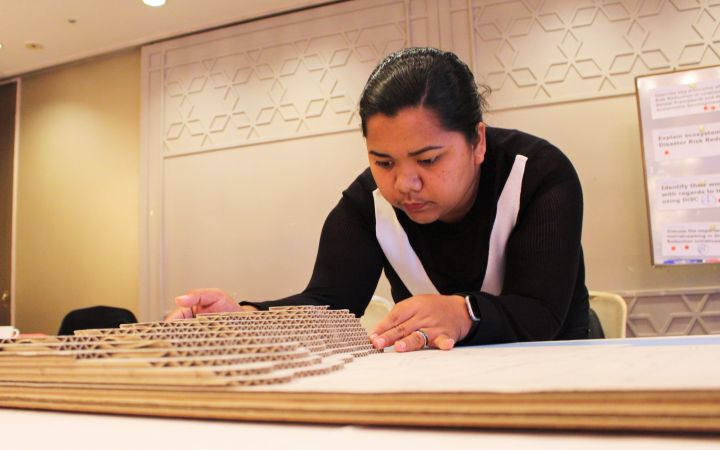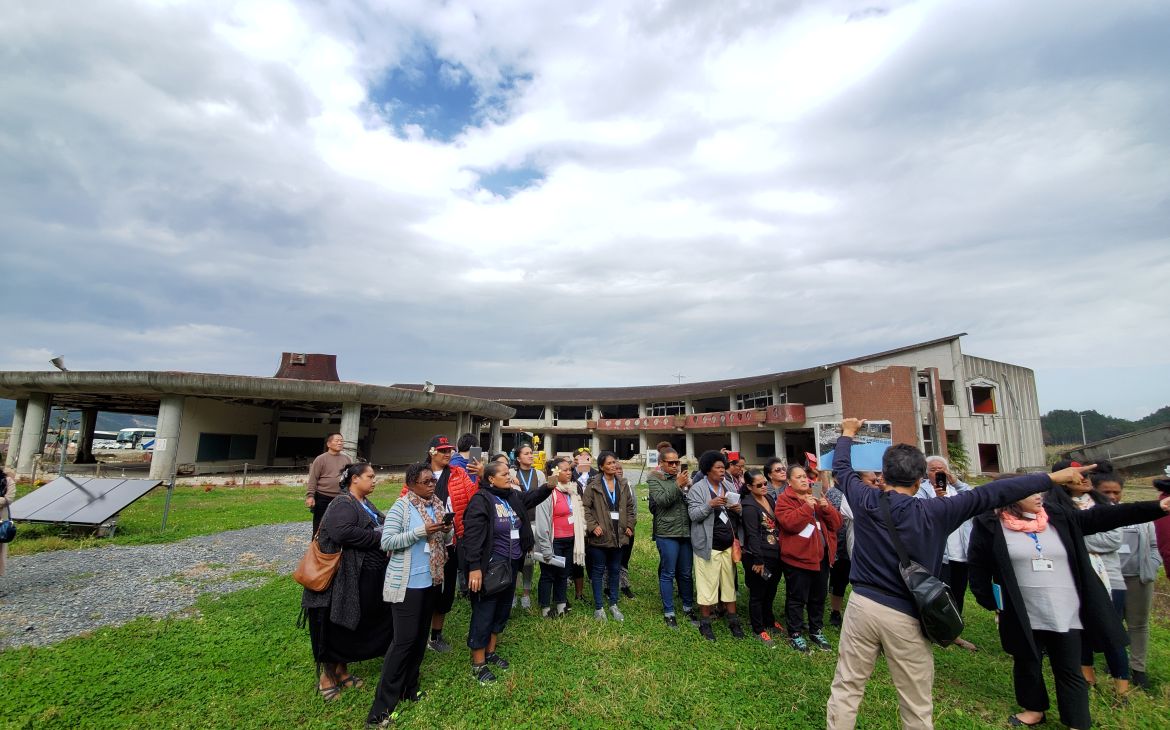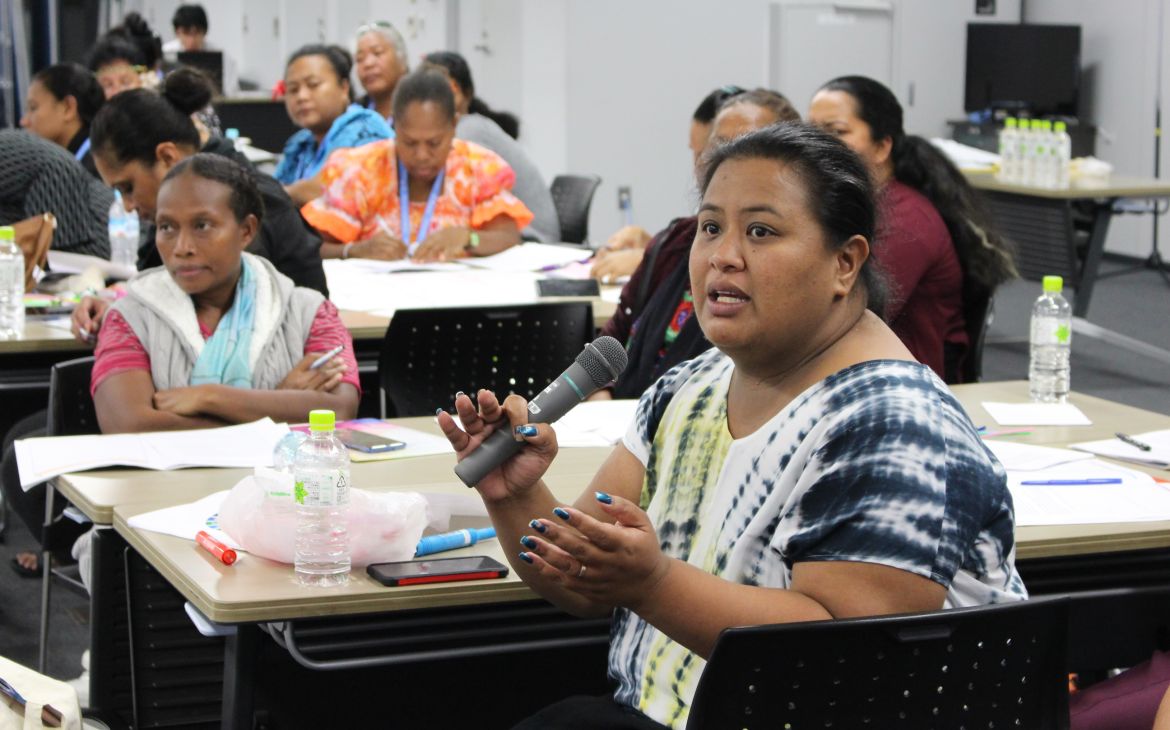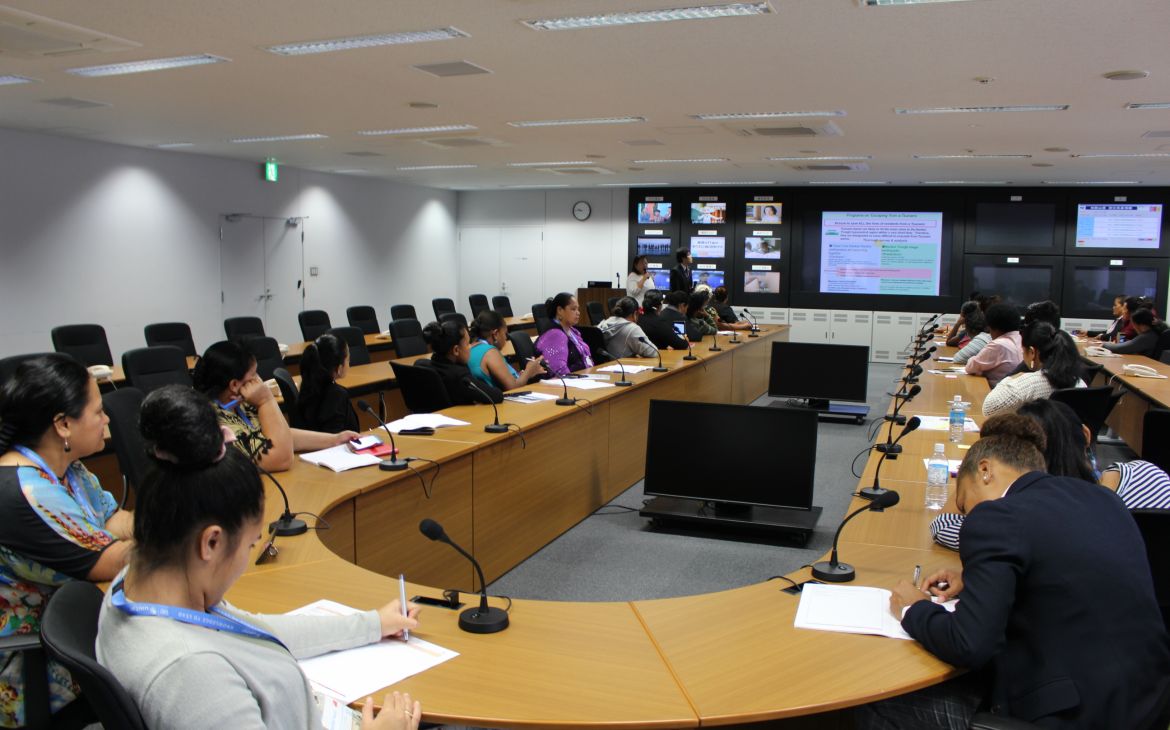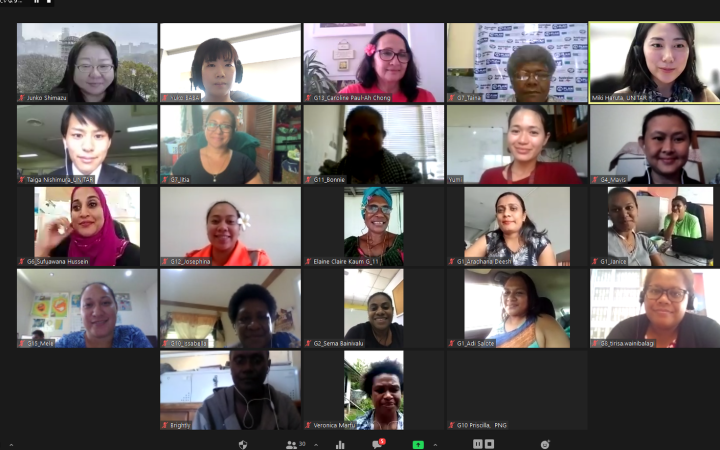Overview
The UNITAR Hiroshima Women’s Leadership in Tsunami-based Disaster Risk Reduction (DRR) Training Programme for World Tsunami Awareness Day was first launched in 2016 in collaboration with the United Nations Office for Disaster Risk Reduction (UNDRR). The programme targets women from around the world but particularly those living or from Pacific SIDS. The UNITAR Hiroshima Office, echoing the Government of Japan, underscored that a gender-focused perspective to DRR. The Programme aims to “help focus attention on the distinct gender-specific capacities and vulnerabilities to prevent, prepare, confront, and recover from disasters.” The Third UN World Conference on Disaster Risk Reduction and its related product, the Sendai Framework for Disaster Risk Reduction (2015 – 2030) set these goals for the reduction of loss of life and livelihood as a result of disasters.
The effects of both the devastating 2011 Great East Japan Earthquake and Tsunami and the 2004 Indian Ocean Earthquake and Tsunami remain seared into the collective memory of all nations, particularly those most at risk from tsunami themselves. The number of natural disasters taking place each year has drastically risen since 2000, and the COVID-19 pandemic reminds us that disasters can be caused by biological hazards as well. Socially vulnerable people such as women, the elderly, youth, children, those who are physically challenged, indigenous people, refugees, migrants, and minorities become even more vulnerable in emergencies. Women in particular are also primary caregivers to others. Empowering them to take part in decision-making processes will eventually help vulnerable populations learn how to support themselves in emergencies.
Programme Introduction
The UNITAR Women’s Leadership in Tsunami-based Disaster Risk Reduction Training Programme for World Tsunami Awareness Day aims to empower women professionals from small island developing states to help their countries and communities better prevent, prepare, confront, and recover from disasters.
Grounded on the Sendai Framework and its goals for an “all-of-society” inclusive approach, the Programme pays particular attention to the distinct gender-specific capacities and vulnerabilities in communities. Supported by the Government of Japan, the Programme marked its sixth cycle in 2021.
In order to encourage both the development of a Community of Practice, as well as national, regional, and supra-regional discourse, the participants come from both governments and civil societies. This Programme allows for focused engagement to take place examining lessons learned in leadership, communication, and gender-mainstreaming in the realm of tsunami-based Disaster Risk Reduction (DRR). The programme has also welcomed various resource persons specialized in gender, earthquake and tsunami mechanism, and DRR planning. Participants are encouraged to utilize their insights and experiences to develop realistic action plans in their communities, countries, and regions.
From 2016 to 2019, the programme had been held on face-to-face in Japan. Interactive presentations and practical exercises have been augmented by study tours to examine lessons learned from the 2011 Great East Japan Earthquake in Sendai City and Ishinomaki City, as well as to observe community-level DRR planning and policies enacted in tsunami-prone Wakayama Prefecture.
Since 2020, due to the Covid-19 pandemic, the Programme was delivered fully online, transformed from its original format as an in-person training with study tours. he participants learned through a combination of on-demand e-learning courses and live webinars with experts in the field, as well as readings and assignments. The shift in modality allowed more than double the usual number of participants to take part in the Programme. To replace the physical study tours and evacuation drills and to convey the real impact of the disasters, new technologies including virtual reality and 3D maps were introduced to the course.
In the 2020 cycle, 68 female participants successfully completed the Programme, which is more than double compared to the previous cycle. Since 2016, the Programme has trained a total of 191 women in the Pacific region.
2020 Cycle Highlights
The Programme trains female professionals from small island developing states on leadership and communication skills, specifically in the context of disaster risk reduction. The Programme was delivered fully online, transformed from its original format as in-person training with study tours. 68 women from small island developing states such as Fiji, Papua New Guinea, and Samoa took part in the programme.
The four-month Programme used a combination of on-demand e-learning courses via the microlearning platform EdApp and live webinars with experts in the field. Participants also undertook group work and made final presentations.
The Programme pushed boundaries by making use of the latest technology. Virtual-reality goggles, for example, were provided so the participants could “visit” sites in Japan. Together with 3D maps, the technology gave the participants an immersive and visceral experience as possible.
One hundred per cent of the participants rated the Programme as useful overall. Ninety per cent indicated that the content was relevant to their professional roles, and 97% expressed their intent to use their new knowledge. The Programme significantly helped increase the participants’ knowledge. In particular, more than 96% of the participants indicated that their knowledge levels increased on gender-inclusive leadership in the context of disaster risk reduction, good practices and challenges for women’s leadership in the Pacific region and in Japan, and community-based disaster risk reduction.
The online format allowed three alumnae of past cycles to join as coaches, who inspired participants through sharing their experiences and achievements. Connecting with the alumnae improved peer-to-peer learning and helped strengthen the Programme’s alumni network.
Key Links
Previous Cycles
Beneficiary stories
Story of Lu’isa Uai Taunga, 2017 Cycle Alumnus, Officer at National Emergency Management Office, Tonga


